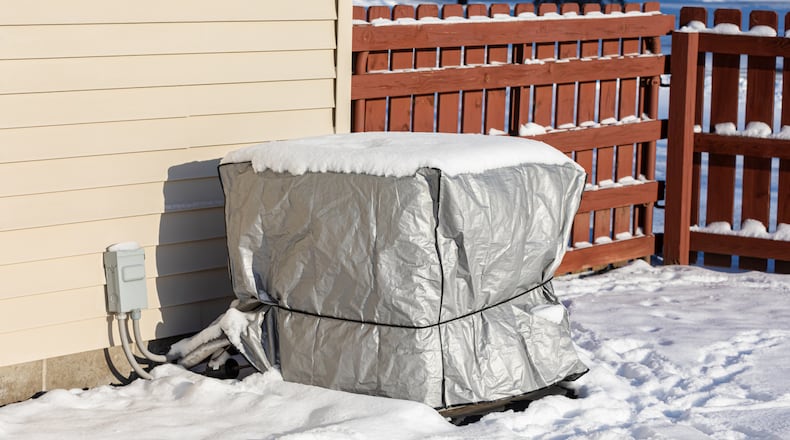- Give your heating system a tune-up
Your furnace is about to clock some serious overtime. Make sure it’s ready for the job.
Replace the air filter, clear dust from vents, and schedule a professional inspection if it’s been more than a year. A clean system runs more efficiently, keeps indoor air healthier, and prevents that mid-January breakdown nobody wants to deal with.
Pro tip: Check your thermostat, too. Programmable or smart thermostats can trim energy costs by adjusting temps automatically when you’re asleep or away.
- Inspect the roof and gutters
According to an article in Cleveland Magazine on home winterization, it’s critical to secure your roof and ensure it’s in good shape to brave the briskness. A few minutes on a ladder now can save you costly water damage later. Look for missing or cracked shingles and clear any debris from gutters, which can lead to structural damage once freezing temperatures hit.
If you’re not comfortable climbing up yourself, most roofing companies offer quick seasonal inspections that are well worth the peace of mind.
- Boost your insulation
Air leaks inside your home can be easy to identify, and according to Cleveland insulation contractor Berry Insulation Co.. Air sealing investments are generally the lowest cost yet highest energy improvement projects, and often overlooked.
Identifying and sealing these leaks will have a significant impact on your comfort and efficiency. Blown-in insulation works well for older homes, while spray foam can create a tighter seal in newer builds.
You’ll feel the difference immediately — and so will your energy bill.
- Tighten up doors and windows
Drafts are sneaky — and expensive. Check for air leaks by running your hand along window frames and door edges. If you feel a chill, it’s time to seal things up. Weatherstripping, caulk, or even temporary shrink film can make a big difference in keeping warm air in and cold air out.
Bonus tip: Don’t forget exterior doors leading to garages or basements – they’re often overlooked culprits of heat loss.
- Prep the fireplace and chimney
Few things beat a roaring fire on a snowy night, but safety comes first. Have your chimney inspected and cleaned annually to remove soot buildup and check for blockages. Make sure the flue opens and closes easily, and keep a screen or glass door in place to contain sparks.
Once everything’s in good working order, you’ll be ready to enjoy a warm fire without worry.
- Protect outdoor plumbing
Don’t let frozen pipes put a damper on your winter. Drain outdoor hoses, shut off exterior water valves, and cover spigots with insulated foam covers.
If you have an irrigation system, schedule a professional blow-out before the first hard freeze.
- Add finishing touches before the cold sets in
Walk the perimeter of your home and check for anything else that might need attention — loose siding, cracked caulking or gaps around vents and foundations. You might also consider covering an outdoor air conditioning unit.
Small maintenance steps now will help your home stay dry, warm, and energy-efficient all winter long.
Content Creator Brooke Bunch may be reached at brooke_bunch@yahoo.com.
About the Author


